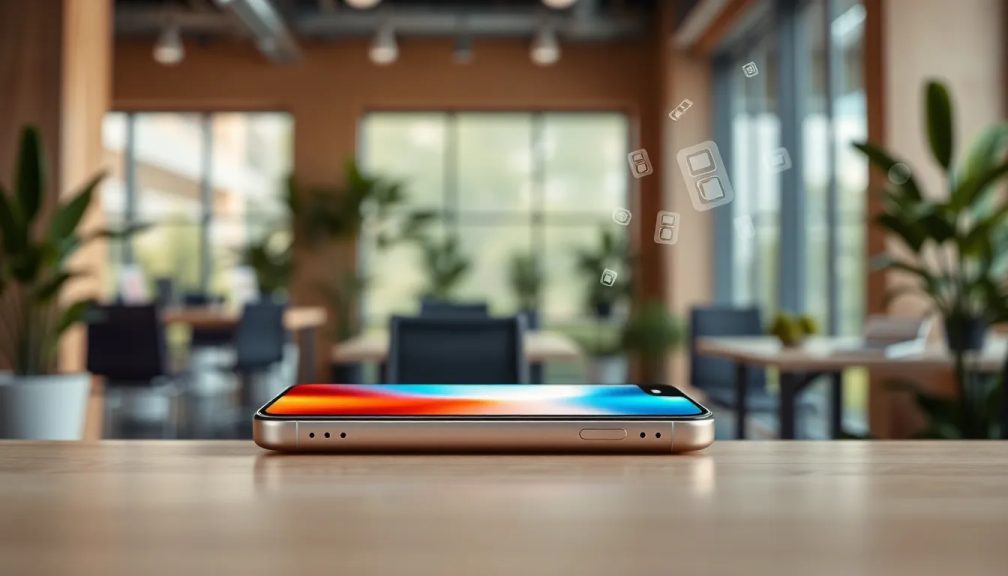iPhone Air review: Apple’s most unique phone in years

Apple has once again stirred the pot with the release of its latest device, the iPhone Air. Positioned as a unique entry in Apple's lineup, it carries both intrigue and skepticism. Users are left to ponder: does this phone truly deliver on the promise of innovation while maintaining usability? In this comprehensive review, we will explore the iPhone Air in detail, examining its features, strengths, and weaknesses.
Initial Impressions and Packaging
The first encounter with the iPhone Air is a mixed bag of excitement and confusion. Before diving into technical specifics, it's essential to note how the Air feels in hand. The packaging itself is thinner and lighter compared to previous iPhones, emphasizing the device's lightweight design. The box contains just the essentials, reflecting Apple’s decision to forgo accessories like headphones and chargers, which contributes to the Air's purported ethos of minimalism.
Upon unboxing the iPhone Air, the first noticeable feature is its 6.5-inch display. While it offers a larger screen, the actual feel of the device is surprisingly light. This can be attributed to its sleek design, which, while appealing, raises questions about grip and durability. Holding it for extended periods may feel less secure compared to the more robust iPhone Pro models. Users might find themselves instinctively reaching for a case, despite the device's intention to remain as thin as possible.
Out-of-the-box Observations
Setting up the iPhone Air introduces a few quirks that differ from its Pro counterparts. Here’s a summary of notable features and settings right out of the box:
- The always-on display feature is disabled by default, possibly due to the Air's smaller battery aimed at conserving power.
- In landscape mode, the Air supports a two-column view of compatible apps, an unexpected feature for its size.
- The Adaptive Power feature is enabled, optimizing performance based on battery usage, but this might impact the perceived speed of the device.
- Exclusively utilizing Apple's C1X modem, the Air does not support mmWave 5G, which could limit connectivity options for some users.
The Design: Balancing Thinness and Functionality
The iPhone Air’s design prioritizes thinness and weight, making it an attractive choice for those seeking portability. However, this raises concerns regarding usability. The device feels delicate, and the lack of heft can make it feel less secure in hand. Many users, including testers, noted that while the phone seems impressively light, it can feel precarious to hold without a case. A thin case may be essential for those worried about dropping the phone.
Interestingly, feedback from users unfamiliar with new iPhone models revealed that the Air’s thinness is immediately noticeable, yet it also leads to skepticism about its durability. As one user noted, “It’s so light, but will it survive a fall?” This sentiment reflects a broader concern among potential buyers regarding the trade-offs made for the sake of design.
Battery Life: Surprising Durability
Battery life is a crucial factor for any smartphone, and the iPhone Air’s performance in this area is surprisingly solid. With a built-in battery that provides decent longevity, users can expect a full day of use under regular conditions. The phone's ability to last through a typical day of intermittent use is commendable, especially for a device that prioritizes lightness over heft.
Here’s a breakdown of battery performance observations:
- Users can navigate through a full day, especially when utilizing the Adaptive Power feature strategically.
- Charging is efficient, with a quick boost from a fast USB-C charger allowing users to avoid low power anxiety.
- The external MagSafe battery accessory, while useful, can negate the weight advantage the Air claims, making it feel bulkier than intended.
Camera System: The One-Lens Limitation
The iPhone Air features a simplified camera system, equipped with a single 48 MP lens that is capable but lacks the versatility of dual-lens systems found in the Pro models. Users transitioning from multi-lens setups may find this restriction limiting, particularly in scenarios requiring varied focal lengths.
Here are some key points regarding the camera performance:
- The main sensor offers impressive image quality, especially for standard photography scenarios.
- Users can take advantage of a 2x telephoto cropping feature, but this does not replicate the clarity of hardware zoom lenses.
- Macro photography capabilities are commendable, often surpassing older models due to sensor improvements.
Performance: Specs and Speed Insights
Equipped with the Apple A19 Pro processor, the iPhone Air boasts impressive speed. However, it does not carry all the capabilities of its Pro counterparts. Performance benchmarks reveal that while the A19 is powerful, the Air’s version sacrifices some features to maintain its lightweight design.
Several aspects to consider include:
- The GPU consists of five cores, one less than its Pro sibling, which may impact graphics-intensive tasks.
- Transfer speeds through its USB-C port are capped at 480 Mbps; a limitation when compared to the Pro’s 10 Gbps capability.
- Thermal throttling can affect sustained performance, particularly during heavy use, which may lead to slower operations compared to the Pro model.
Feature Set: What's New and Different
The iPhone Air also introduces some unique features that set it apart from its contemporaries:
- Support for two-column app layouts, a feature generally reserved for larger models, enhances multitasking.
- Integration within the Apple ecosystem remains strong, ensuring seamless connectivity with other Apple devices.
- Users can enjoy a vibrant 6.5-inch OLED display that supports high refresh rates, making for a smooth visual experience.
While the iPhone Air may not appeal to everyone, it does challenge conventional ideas about what a smartphone can be, especially in terms of weight and design.
Final Thoughts: A Unique Offering
The iPhone Air may not be for everyone, but its unique approach to the smartphone experience is noteworthy. It captures the essence of Apple's design philosophy while also raising questions about the balance between form and function. Here’s a recap of its strengths and weaknesses:
| Strengths | Weaknesses |
|---|---|
| Thin and lightweight design | Higher price point compared to similar models |
| Solid battery life | Limited camera versatility |
| Fast processor with future-proofing | Reduced performance features compared to Pro models |
| Innovative display features | Potential durability concerns due to thin design |
In conclusion, the iPhone Air stands as a testament to Apple's ongoing evolution in smartphone design. Whether or not it is the right choice for you will depend on personal preferences regarding functionality, usability, and the importance of weight and size in your daily digital life.
For those intrigued by the iPhone Air, you can check out further hands-on insights in this video:
As technology continues to advance, the iPhone Air may just be the stepping stone toward a more streamlined future in mobile devices.




Leave a Reply